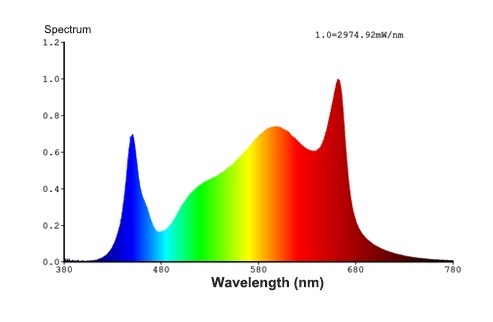Tanning Your Plants:
The Effects of UVA and UVB Light on Plant Growth

UV light has a reputation for being harmful to living organisms, including plants, but recent research shows it can also benefit plant growth when used strategically. Just as humans tan under the sun, plants respond to ultraviolet (UV) light in various ways. Understanding how UVA and UVB light affects plants can unlock new possibilities for enhancing crop yields and quality.
What is UV Light?
Ultraviolet (UV) light is a type of electromagnetic radiation with wavelengths ranging from 10 to 400 nanometres (nm), shorter than visible light but longer than X-rays. UV light can be divided into three bands:
- UVA (320-400 nm)
- UVB (290-320 nm)
- UVC (100-290 nm)
While UVC rays are blocked by Earth’s ozone layer, both UVA and UVB rays reach the surface and affect plant life. These rays play a significant role in plant growth and development, but they also pose certain risks.
How UV Light Affects Plants
Plants rely on sunlight for photosynthesis, but UV light influences more than just energy production. UV radiation helps plants regulate key developmental processes, such as growth, flowering, and stress responses—a process known as photomorphogenesis. This is how plants “read” their environment and adapt to light conditions.
Plants have specialized photoreceptors that detect UV light and trigger physiological changes. For UVA light, photoreceptors like cryptochromes and phytotropins help regulate growth and defence mechanisms. UVB light is absorbed by a specific photoreceptor called UVR8, which helps plants prepare for potential damage by synthesizing protective compounds.
UV-Induced Plant Protection
When exposed to UV light, plants activate defence mechanisms, producing protective substances like flavonoids and phenolic compounds. These act as natural sunscreens, absorbing harmful radiation and preventing cellular damage. The synthesis of these compounds not only protects plants but can also enhance crop quality.
In some agricultural crops, the production of these compounds is highly desirable. For example, they can improve essential oil production, enhance fruit flavour, and increase the potency of herbs.
Using UV Light in Horticulture
For growers, applying UV light can lead to significant benefits, but timing and balance are crucial. Studies show that exposing crops to UV light—particularly UVB—at the right stage of development can boost essential oil production and resin output in flowering plants.
Modern grow lights, such as metal halide (MH) and ceramic metal halide (CMH) lamps, often include calculated amounts of UVA and UVB. These bulbs are recommended for the final two weeks of the flowering cycle, allowing crops to maximize growth while increasing resin production and flower protection.
Timing UV Light for Maximum Benefit
While UV light can have positive effects, too much can hinder plant growth, particularly if applied throughout the entire growth cycle. Plants like leafy greens are sensitive to overexposure and may experience reduced height, weight, and photosynthetic activity. Therefore, it’s important to apply UVB selectively and in moderation.
The effectiveness of UVB exposure also varies across species and even among different strains. For best results, consult with your local hydroponics store or expert on how to optimize UV light for your particular crops.
Conclusion
When used correctly, UV light can offer numerous benefits, including stronger plants, better-smelling flowers, and tastier, more potent fruits and herbs. As more research reveals the advantages of UVA and UVB light in horticulture, growers have new opportunities to improve crop quality and productivity. Always balance UV exposure to protect your plants while reaping the rewards of enhanced growth and yield.
